When I first saw Halloween Kills, I hated it. When Green first announced his new take in the series, I couldn’t have been more excited and optimistic about his attempt to inject some mystery back into the franchise. After Halloween Kills, I couldn’t have been more cynical, convinced that David Gordon Green had broken his promise for a more grounded approach to Halloween in favor of the same weathered territory as before. It seemed gory, nonsensical, and without aim or purpose. My distaste was so intense I initially hesitated to get a physical copy, only buying the extended cut out of morbid curiosity. Then when I started watching the extended cut, an unusual thing happened. I started liking the movie. Really liking it. It’s funny how first impressions of a film don’t always hold on repeated viewings. In this case, Halloween Kills revealed itself as one of the most unusual and ambitious slashers ever made and has since become a franchise favorite.
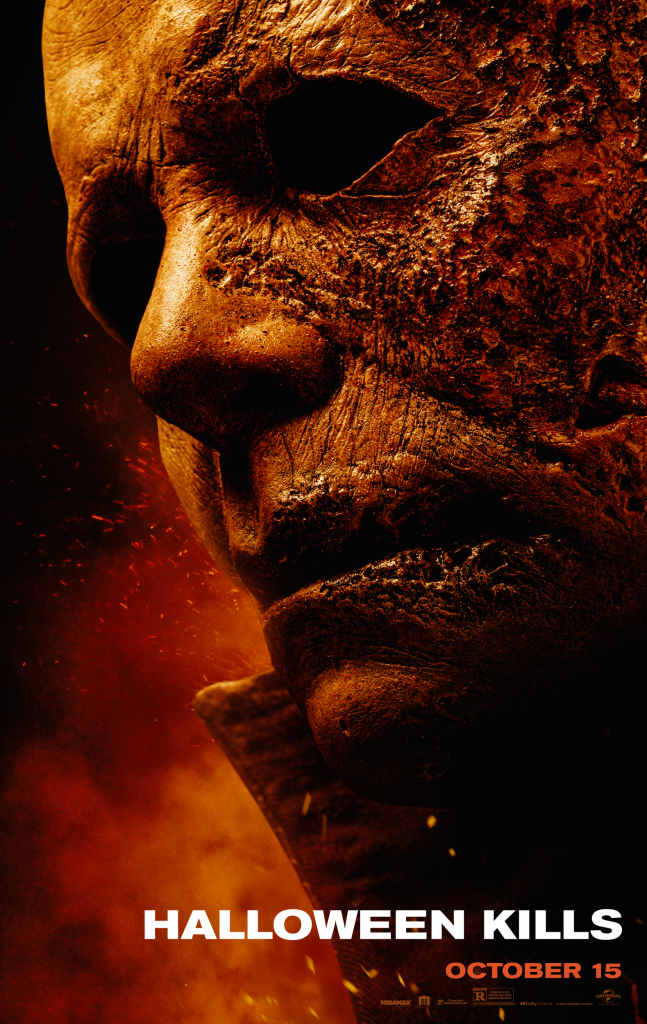
Halloween Kills picks up immediately after 2018’s Halloween. Laurie and her family are at the Haddonfield Memorial Hospital following their encounter with the Shape, unaware he’s escaped her burning fortress and is once more loose in Haddonfield. In a parallel story, Laurie’s fellow survivors from the original, Tommy Doyle (Anthony Michael Hall), Lindsay Wallace (Kyle Richards), Lonnie Elam (Robert Longstreet), and Marion Chambers (Nancy Stephens) learn of the Shape’s rampage and attempt to rally the townsfolk to hunt down their boogeyman. Halloween Kills is a grittier, nastier film than the 2018 sequel/reboot. While its predecessor made liberal use of yellow-tinted streetlights and warm colors, Halloween Kills looks more like the original with its deep blues and dark shadows. The violence is more upfront and grotesque, which I suspect was a concession to appease gore hounds dissatisfied with the previous film. The film at times struggles to develop its characters and ideas, but Halloween Kills does put an interesting spin on the formula. This time the town is on a rampage and the Shape is the one being hunted.
Halloween Kills is often compared unfavorably to 1981’s Halloween II. Like Halloween II, Kills picks up on the same night as its predecessor. Like Halloween II, it follows Laurie as she’s taken to Haddonfield Memorial. Like Halloween II, Kills doesn’t quite function as its own movie. The difference is that the original Halloween was a finished story, leaving the sequel to feel like an extended third act. 2018’s Halloween, by contrast, was only the first half of a larger story. Halloween Kills is the second half, fully committing to characters and plot threads seeded in the previous movie. That is, all except leading lady Laurie Strode. Instead if confronting her attacker, Laurie is sidelined in the hospital while the movie happens around her. It’s a bizarre choice, but serves as one of the defining moments not for Laurie’s character here, but the perhaps the most consequential choice of the new trilogy.
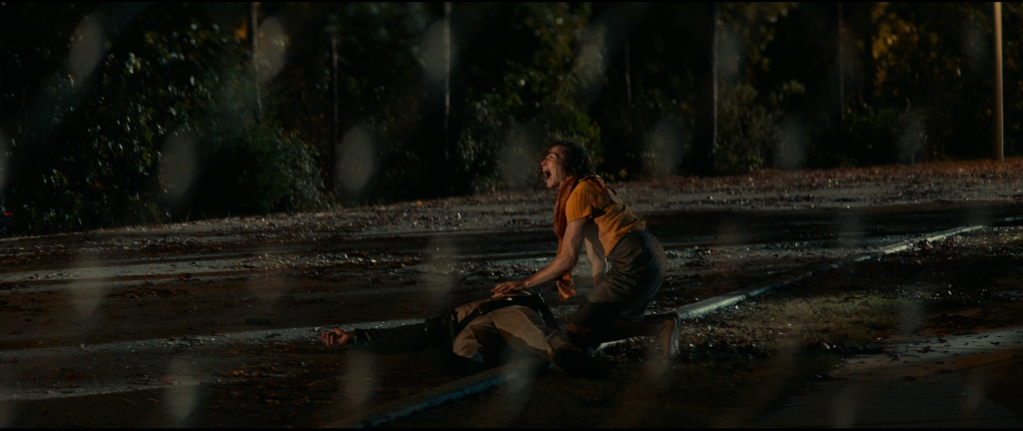
From the outset, Halloween Kills redeems some of the biggest flaws in the 2018 movie. Allyson’s boyfriend Cameron (Dylan Arnold) vanished from the previous film following a fight where he destroyed Allyson’s phone. Our impressions of him are not only poor, but he came across feeling less like a fully developed character and more as a plot device to cut her off. Halloween Kills cleverly re-introduces Cameron with a ‘save the cat’ moment, which right away makes us more sympathetic to him. In the film’s opening, Cameron rescues Officer Hawkins (Will Patton) following the controversial scene where Sartain seemingly killed him and drove the Shape to Laurie’s home. This not only makes Cameron appear more heroic but also gives him a crucial role in the story. He’s just saved one of the trilogy’s most important characters since Hawkins turns out to have the greatest understanding of the masked killer.

The beginning of Kills finds Laurie fighting for her life with Karen and Allyson by her side. Now having firsthand experience of the kind of terror and loss she suffered in her youth, Laurie’s daughter and granddaughter are finally unified and trying to survive the night together. Despite this, the seeds of the family’s eventual undoing have been planted. Karen is certain the Shape is after her mother, while Allyson, reeling from her father’s death, wants to take justice into her own hands. Laurie’s obsession with her would-be killer also continues to ripple throughout the story. Laurie herself was fixated on the Shape and the idea of getting revenge, living a lifestyle that proved more of an advantage to him than her. It was her family rather than her preparedness that saved her in the last movie. In this film, her arsenal is what saves the Shape, the killer surviving a housefire by hiding in Laurie’s own gun locker.

Out of all incarnations of the Shape, this version is without a doubt the nastiest, even giving Rob Zombie’s brutal depiction a run for his money. His mask is now burned on one side, leaving the face looking almost like an angry skull. He still retains his trademark playfulness, scaring victims on the roof of a car and posing a murdered couple’s corpses to resemble their own vacation photos. But outside of that, the Shape is raw and brutal, attacking crowds of people and subjecting victims to vicious bare-handed beatings. He also rarely confronts the main characters, cutting a seemingly random path across Haddonfield that feels more like an ensemble disaster movie like Poseidon Adventure or Towering Inferno than a slasher. As mentioned before, this movie is about the Shape being chased. It’s this chase that makes him stronger.

Halloween Kills is all about how we unintentionally empower our monsters. One of the franchise’s most beloved characters is Sam Loomis, Michael’s doctor played by the late Donald Pleasance. It would be easy to dismiss Loomis’s presence here as fan service, but his views on his patient are essential to the themes of this film and the trilogy as a whole. From the first film to 6th, Loomis spoke of Michael as an unstoppable evil beyond a mere man, views previous sequels validated. Green’s trilogy takes a different approach, reframing Loomis as someone who, after eight years of working with him, was pushed into a breakdown by his patient and projected his own fears onto Michael. It’s Loomis who confirms Laurie’s fears that Michael is the actual boogeyman, something she echoes 40 years later. And of course, there’s little Tommy Doyle, the boy Laurie was babysitting who tried to warn her of the boogeyman. Now in his 50s, Tommy has become like Loomis, building up Michael’s legend in the eyes of the town. These ideas can kill.
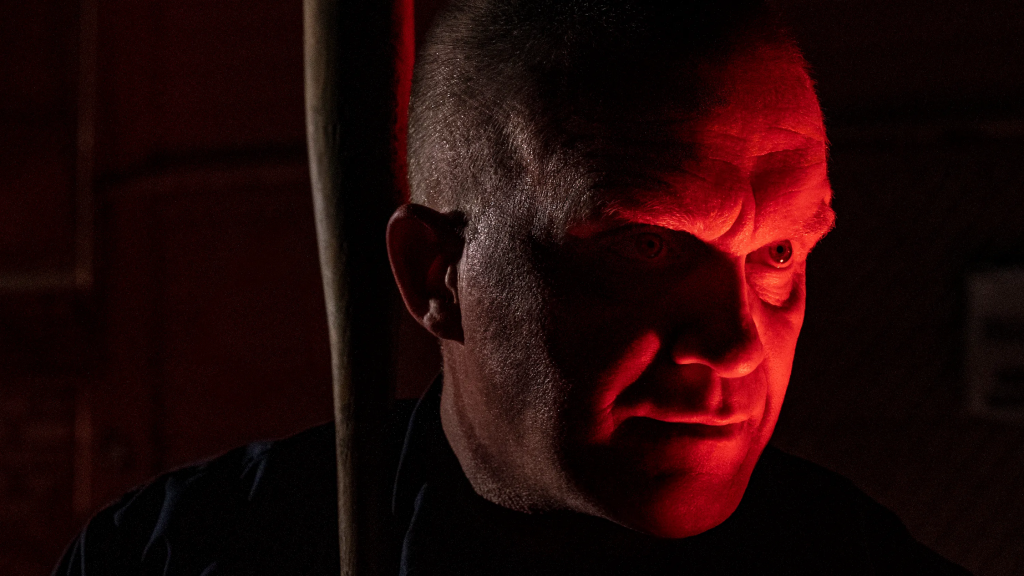
One could argue Tommy is the true villain of Halloween Kills. He’s not an evil man. Like Laurie, he’s haunted by his experiences and wants nothing more than to stand up and face the man who haunted 40 years of his nightmares. He also genuinely cares about his friends and fellow survivors. The now infamous ‘Evil Dies Tonight!” line is first uttered by Marion as almost a joke. It’s after her death that Tommy uses it as a rallying cry to win people to his cause. The idea of someone rallying Haddonfield to fight back may seem appealing, but Tommy doesn’t think things through. His first attempt to stand up to the Shape occurs outside his favorite bar, with his fellow survivors watching. In the aftermath, Tommy feels empowered and motivated to continue his mission. He’s unaware that he’s just terrorized Tivoli (Ross Bacon), another escaped, but innocent patient from Smith’s Grove. The red-tinted image of Tommy seen afterward is not heroic. It’s monstrous.
Tommy’s rhetoric leads directly to the deaths of those around him, as seen when Lindsay, Marion, and newcomers Marcus (Michael Smallwood) and Vanessa (Carmela McNeal), encounter the Shape outside a park. Once he appears, it’s the group’s own panic that proves their undoing. Marion fires her gun in a frenzy until it’s empty. She locks the doors to keep Michael out, unwittingly locking the three of them in. Marcus attempts to drive away not knowing Lindsay has the keys. Vanessa accidentally shoots herself. It’s a mess, and why wouldn’t it be? Tommy told them Michael was the boogeyman, so of course they panic. The only survivor is Lindsay, who manages to evade the Shape in a nearby park. The scene ends on an interesting note where, after only pursuing Lindsay for a short distance, the Shape seems to abandon the chase.

Tommy’s call to action is a force of destruction that reverberates through the entire town, and leads to the splintering of Laurie’s family. Mere hours removed from her father’s murder, Allyson is still reeling from the loss. When Cameron tells her that Tommy plans to hunt the killer down, it’s understandable that she’d want to participate. This would be an empowering moment in most movies, but Kills is brutally honest. Allyson is a frightened kid who just lost her dad. She has no special training and no experience. Sending such a damaged person to hunt a madman is a recipe for disaster. Yet this is exactly what Tommy does. At no point does he consider that involving kids in this is dangerous. What’s worse is he’s even shown encouraging Allyson and Cameron to come along, sending them to search for the Shape in a deserted park. He unwittingly exploits Allyson in her grief, an act that nearly gets her killed.
Laurie’s daughter Karen is the voice of reason in the story. While Karen seemed callous or dismissive of her mother’s trauma in the previous film, Halloween Kills further contextualizes her character not as someone unsympathetic to her mother but wary of her obsession. Like Laurie, she’s now a victim of the Shape and has suffered an arguably greater than Laurie’s since her husband was killed. Despite this, she’s the most levelheaded character, maintaining her composure even as everyone else comes unglued. She tries and fails to convince Allyson that hunting Michael is dangerous and that they need to stick together, but the young and bereaved Allyson doesn’t listen. She also struggles to quell Laurie’s rage when she learns the Shape is still on the loose. She works tirelessly to try and convince those around her to think things through until everyone else’s failure reaches its natural, tragic conclusion.

This is where Laurie comes in. As an audience, we assume, even wish, for Michael to track her to the hospital. It’s what happened in Halloween II, and every sequel since depicted the Shape as being after a specific person. The director’s cut plays with this assumption in a clever way, showing the arrival of an unseen figure via a long POV shot similar to the opening of the original Halloween. Believing the Shape has arrived, Tommy tries to inspire the crowd to stand up and fight, even telling Laurie the Shape is still alive. Only this POV isn’t Michael. It’s Tivoli, the other patient who escaped Smith’s Grove. The night’s events, coupled with Tommy’s rhetoric, send the the bloodthirsty mob spiraling out of control. Despite Laurie and Karen trying to quell the violence, the mob ends up chasing Tivoli to his death. It’s the logical conclusion to the types of rhetoric by the likes of Loomis and Tommy. In trying to help, Tommy lit a fire that burned out of control and only served to hurt those around him. It’s a tragic moment, and not what we as the audience wanted. We wanted Michael to fight Laurie, and he’s not here. Which begs the question, where is he?
The characters in Halloween Kills don’t just inflate the Shape. They also misunderstand his motives. When I first saw 2018, I hated the twist where Sartain, Michael’s doctor, orchestrated the confrontation between his patient and Laurie. Some, myself included, were so confused by this moment that we missed the clues, clues like Michael looking not at Laurie but his own reflection when they first cross paths, or how he seemed to react to his sister Judith’s name, or even how before Sartain abducted the killer, he was heading in the opposite direction of Laurie’s compound. Going where? The answer is the defining trait of this iteration of the character.
The 1978 flashback depicting Michael’s arrest by Hawkins (played by Thomas Mann in flashback) and his fellow officers is a definite highlight of Halloween Kills. The atmosphere of the original film permeates the sequence, which ends with our first glimpse of how panicked characters make mistakes. In trying to kill the Shape, Hawkins instead kills his partner, an act that haunts him for the rest of his life. It’s also here Hawkins learns something about Michael, a noticeable pattern missed by Loomis and Sartain that Michael shows whenever he’s injured or threatened. When Michael broke out of Smith’s Grove, he ran home. After being shot by Loomis, he ran home. After escaping Laurie’s compound, he runs home. Why? To relive that first murder? Chasing a lost childhood? Pure instinct? We never know. The point is, he’s not only not related to Laurie. He’s not interested in her at all. His abandonment of her is the entire point of the film, and what sets this version of the Shape apart from previous sequels. Despite all the bluster surrounding him, the Shape just wants to go home.

This twist was unfortunately spoiled in advertising. Trailers gave away where Michael was headed, ruining the shock we were supposed to feel along with Laurie. I wonder if Hawkins struggling to speak from his injuries was a deliberate dramatic choice by filmmakers. He’s the one who has the greatest understanding of the Shape, and it’s not understanding the Shape that causes most of the problems for the characters. Allyson knows the Shape wasn’t after Laurie, but she’s so devastated that it slips her mind to tell Karen. Karen thus believes the Shape is after Laurie, which leads to Tommy riling up the mob that kills Tivoli. It’s also the reason Laurie was so fixated on Michael as she, along with us, assumed he was fixated on her. It’s only through Hawkins that Laurie learns she spent 40 years obsessing over a man who had perhaps forgotten her from the moment Loomis shot him. It’s an important revelation for Laurie, thus paving the way for the character she becomes in the next film.
All these themes come to a head in the film’s closing set piece. It’s Lonnie rather than Tommy who puts together where Michael is headed, leading to a confrontation at the Shape’s childhood home. It’s a disastrous encounter wrought with panic and poor planning that leaves both the Elams dead and Allyson at the Shape’s mercy. She survives only when Karen, the voice of reason in this whole mess, intervenes. But Karen can’t bring herself to kill, something established in 2018 when she opts to graze the Shape instead of going for a kill shot. Instead, she trusts Tommy and his mob to destroy him. But Tommy receives no redemption. Eager for a fight, his mob botches the Shape’s execution, leading to the deaths of Tommy and all the rest. The ensuing massacre is only shown in fragments, allowing us to fill in the gaps as to exactly what happens. But the defining moment of this scene is Tommy’s death. He’s spent the entire film carrying the prized Old Huckleberry baseball bat from his favorite bar, a symbol of the authority he plans to kill Michael with. It’s by this symbol that Tommy dies. In trying to destroy his boogeyman, Tommy has only armed him, and allowed him to live up to his legend.
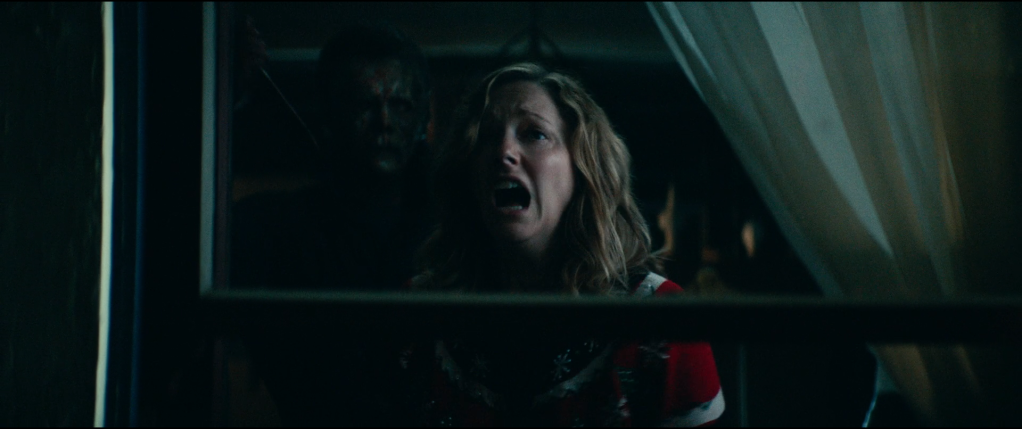
Halloween Kills ends on a final tragic note. Believing the Shape to be dead and wanting some deeper understanding of him, Karen goes into the old bedroom of Michael’s sister to stand in his shoes. Once there, she realizes she’s not alone, and is thus killed in an identical fashion to Judith Myers in 1963. The story ends the same way it began, with a murder in an upstairs bedroom of the house on Lampkin Lane. Staring in his own reflection, we know. The Shape is home.
Halloween Kills is a flawed film, as evidenced by my own initial and very mixed review. Some of its characters aren’t well developed, the story sometimes feels disjointed and without purpose, and several moments border on melodrama. Legacy characters like Leigh Brackett and Marion Chambers are sorely underdeveloped. The reveal of Michael’s destination could have been done better, the murders of a couple living in his former home perhaps occurring after the mob scene at the hospital instead of spliced over it to add some surprise and suspense. Laurie’s final closing monologue tries to be moody, but to some can elicit eye rolls rather than shudders. Despite these flaws, my admiration for Kills has only grown since its release.
Ever wonder what it would be like if someone did Halloween on the scale of a grand epic like Titanic or Gone with the Wind? Together, 2018s Halloween and Halloween Kills are that movie, a big budget three-hour slasher epic about a broken family finding unity, only to lose it not just to their attacker, but his very legacy. It pays tribute to the franchise as a whole while also serving as an interesting counterpoint to previous sequels, all summed up in that final scene of the Shape staring into his reflection. It calls into question the larger-than-life portrayal of previous sequels while stripping the character back down to what he was in the original, a strange man in a mask who only plays pranks and kills. Some will argue this diminishes him, but unlike the powerhouse in previous sequels, I can imagine this man in my house on a dark Halloween night, which makes him so much scarier. Kills is the grand finale of the Michael Myers story, concluding with a repeat of his first murder before he fades into the night.
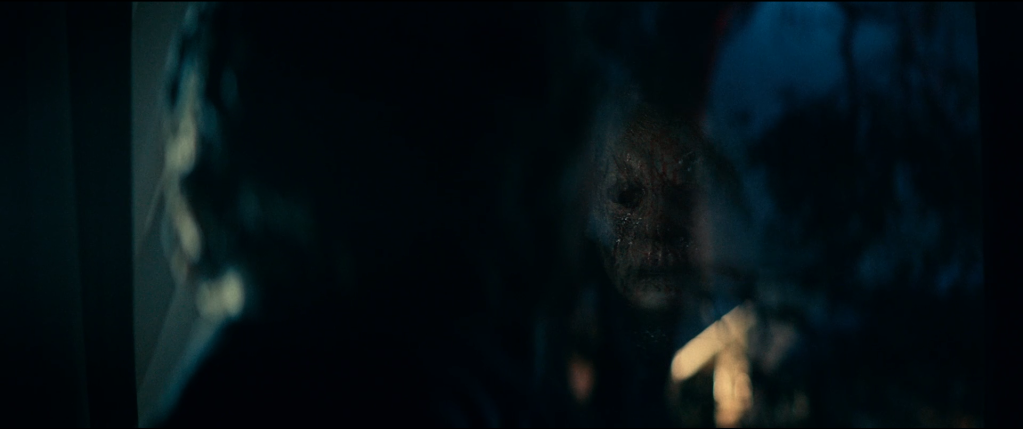
But what happens after that? The Shape has achieved ultimate victory in this moment, but no moment lasts forever. While this may be the finale of the Shape’s story, the tale of Laurie Strode isn’t done. As controversial as these films were, they paled in comparison to the sharp rebuke that Halloween Ends got from fans. Though it is my hope our talk may have given you a greater appreciation for Green’s first two outings in Haddonfield, what could I possibly have to say about Green’s final outing? Quite a lot actually, and I look forward to sharing it all with you.
Like this article? check out these similar pieces by some of our top contributors!
David Gordon Green’s HALLOWEEN Revisited – Part I – It’s About Her

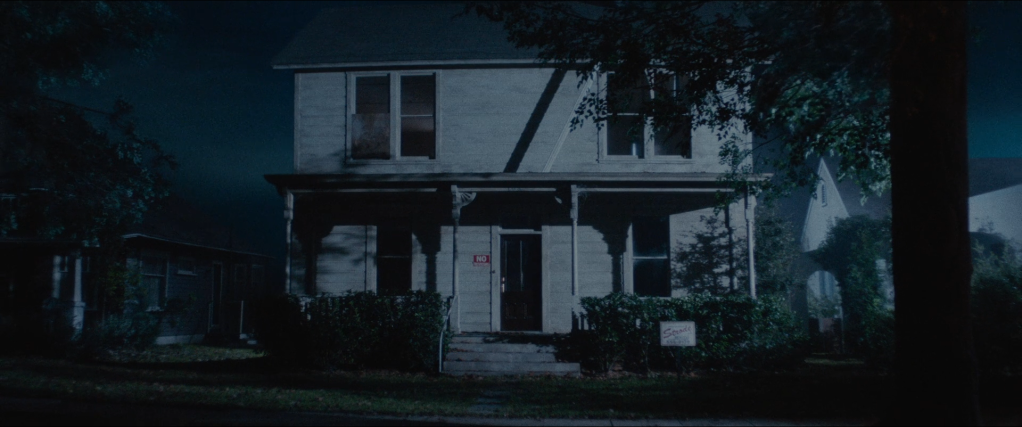

One thought on “David Gordon Green’s HALLOWEEN Revisited – Part II – The House on Lampkin Lane – ScreenHub Entertainment”